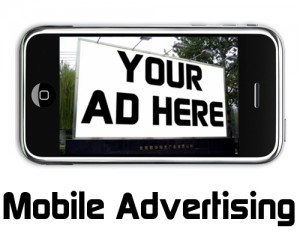Brands Told To Shape Up Their ‘Inert’ Mobile Advertising
by on 10th Feb 2014 in News


Ad Tech providers and publishers including AOL, Google, Conde Nast and Forbes, have jointly told advertisers: “It’s time to improve your mobile advertising,” calling on them to back the HTML5 web standard.
The call was made today (10 February) via an open letter published to coincide with the IAB Annual Leadership Meeting in the US, and forms part of a wider industry movement encouraging brands to adequately invest in their mobile advertising strategies.
The document reads: “We'll just say it: It’s time to improve your mobile advertising. In a medium that’s all about movement, your ads are inert.
“To guarantee the ads you pay for actually appear and look great on all screens, you should insist to your ad agencies that your advertising creative be developed in a mobile-compatible format. And the one open, industry-standard, universal format for building mobile-ready creative is HTML5.”
With nearly one-in-five webpage views no generated by a mobile device, signatories to the letter – which also includes GroupM trading desk Xaxis, mobile ad network Millennial Media, and Undertone – investing in HTML5-based ads will help reduce campaign costs.
The move forms part of a wider industry shift to improve mobile advertising in all aspects from creative executions, to retargeting (the effective lack of cookies makes this difficult), as well as assessing the value of mobile media placements.
In the UK this has included the establishment of a working group dedicated to bridging the gap between the mobile advertising and programmatic sectors – a group consisting of Adbrain, AdTruth, AppNexus, Nexage, RocketFuel, StrikeAd, among others.
This was quickly followed by the announcement of a mobile programmatic advertising trial between Tesco and Weve, the joint venture company launched to leverage the multitude of data the UK operators EE, O2 and Vodafone hold on their subscribers.
Meanwhile, the recent launch of the Xaxis brand suite identified targeting users across a range of devices as a key element of its offering.
However, the prospect of serving display ads on mobile devices remains a complex one, as many popular mobile browsers, including the iPhone’s native Safari browser and Mozilla’s Firefox, block third party cookies.
This in addition to the fragmented nature of buying both in-app and web-based mobile inventory, as well as network latency issues often disrupting campaign reporting, have relegated mobile to the periphery of most media plans.
However, with conservative estimates placing mobile media consumption at 20% of all web traffic (in many consumer publications this skews much higher), the industry is realising its has to grasp the nettle of campaign planning, execution and assessment.
A recent report by mobile ad exchange Nexage documents the rising importance of mobile media in terms of campaign spend, with 85% of media professionals claiming it will be the most importance advertising screen by 2016, see below.
A further examination of the findings also indicates that brand spend on mobile is increasing, with 70% of Nexage’s revenues derived from brand spend (the remaining 30% is from performance campaigns), as of December 2013. A 153% increase from October 2012, according to the company.
Ad NetworkAdvertiserDisplayExchangeMartechMobileProgrammaticTrading








Follow ExchangeWire